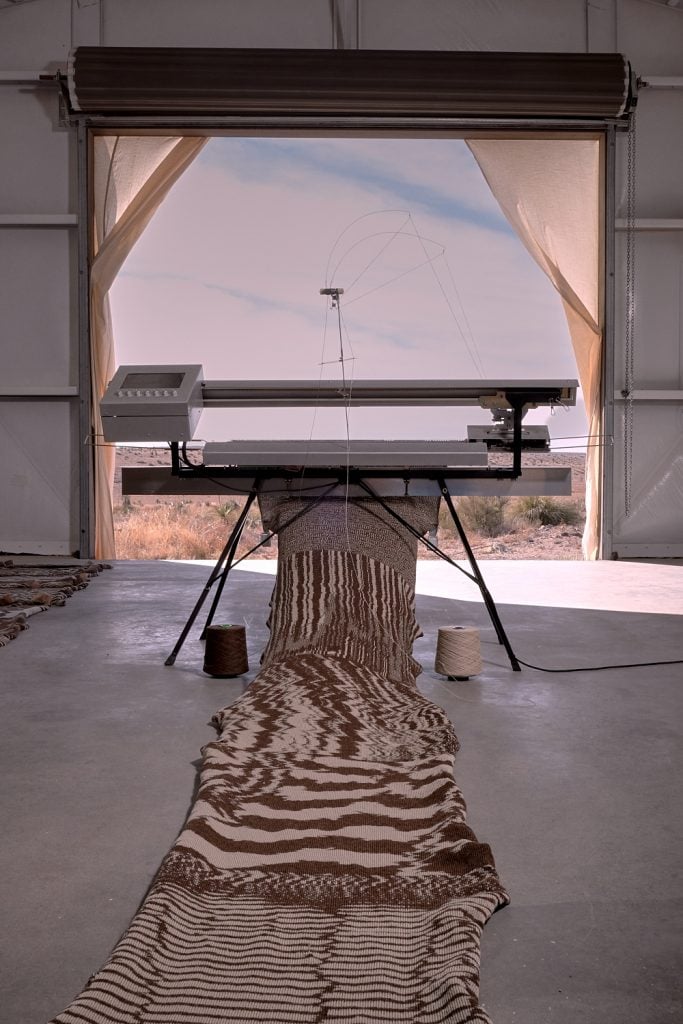
23 Dec In the Texas Desert, Craft Meets Coding
Source Credit: Content and images from Artnet News. Read the original article - https://news.artnet.com/art-world/in-the-texas-desert-craft-meets-coding-2592897
Last month, in a large hangar on the outskirts of the rural art oasis of Marfa, Texas, a quaint, vintage knitting machine was churning in front of the uplifted rear cargo door, revealing a gorgeous backdrop of desert expanse punctuated by wiry sagebrush and tumbleweed. The archaic contraption looked like a keyboard for some lost 1960s krautrock band, but it had actually been tricked-out by the London-based art and design duo A.A. Murakami. It was spitting out a gorgeous neutral-toned tapestry of what looked like undulating sinewave patterns and seemed to be operating by ghost power.

“A Thousand Layers of Stomach” debuts in Marfa. courtesy of Trame
This machine was part of A Thousand Layers of Stomach, a project that merges generative code with a customized knitting apparatus, allowing the user to manipulate the evolving patterns. Here, mechanics and digital ingenuity meet fiber art and meditations on the intersection of technology and nature—in this case, it is inspired by the intricate patterns found on clam shells.
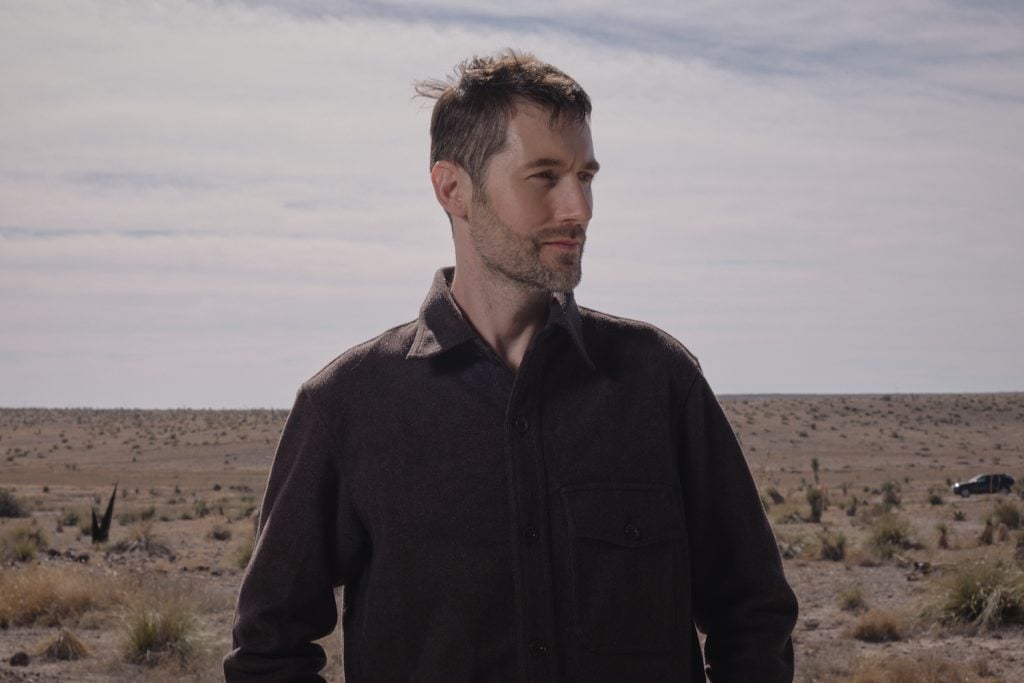
Alexander Groves, one-half of A.A. Murikami. Courtesy of Trame.
“I became interested in them when I was eating miso soup,” explained Alexander Groves, one half of A.A. Murakami, who is represented by Pace Gallery and Pearl Lam, and who has work in the permanent collections of MoMA and the Centre Pompidou. He continued: “Clams don’t really have a brain. They just have a few nerves, and they evolved 500 million years ago before complex life.”
Groves approached the chugging machine, adjusting its knobs, causing the glowing green waveforms on its small screen to shift and flux. “You can play around with it,” he said, as the weave on the fabric adjusted in response to his changes. “This is like how environmental factors—stress, acidity, sea temperature—would all affect the pattern.” By day’s end, the tapestry stretched long enough to resemble an abstract scarf for a giant.
This stop in Marfa marked the debut of A Thousand Layers of Stomach, but it’s just the beginning of the project’s journey. The work will continue to evolve and expand, performatively lengthened in upcoming stops at museums in Hong Kong, Beijing, and London.
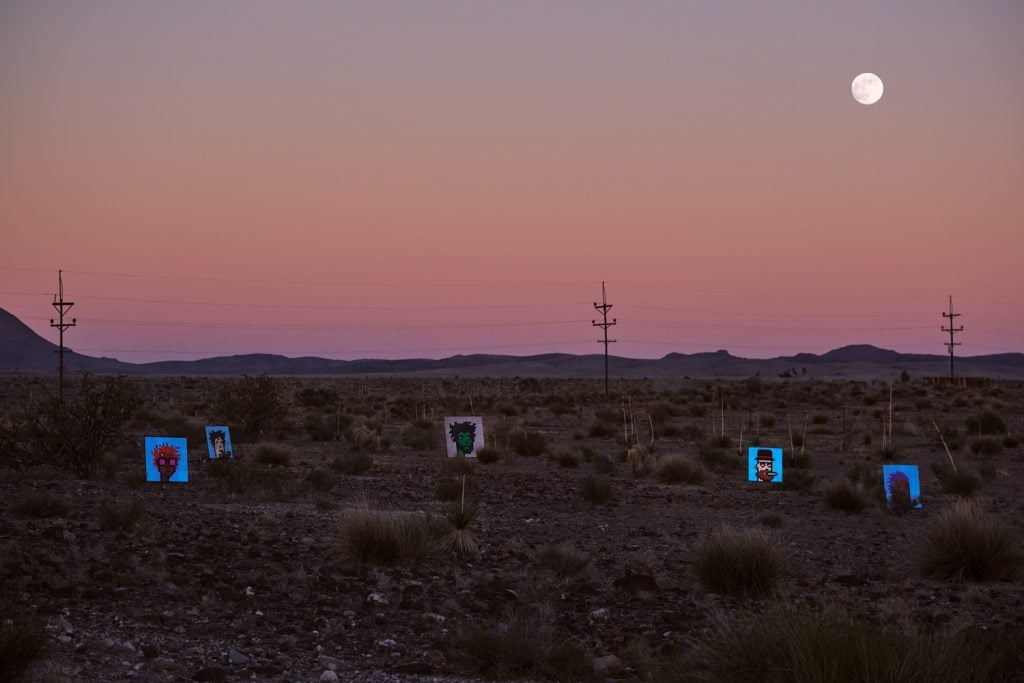
“Cryptopunks Mirrors” in the desert moonlight in Marfa. Courtesy of Trame.
A.A. Murakami was debuting the work at “Desert Threads: Weaving Tradition and Technology,” an event by the Paris-based collaborative studio Trame, “where the boldness of digital art meets the tactile richness of Berber tradition,” the website touts. “The concept is Moroccan desert meets the Texan desert,” said Trame’s Head of Brand, Jaime Derringer, who founded Design Milk in 2006. She has now seen the generative light and will proselytize about weaving draft algorithms and codes and can explain what it means that the platform is powered by the Art Blocks Engine. Part of Trame’s mission is pairing digital artists (besides A.A. Murakami, they collaborate with those who thrive outside of the traditional gallery system and have large social imprints) with traditional artisanal crafting techniques. “What’s different about Trame,” Derringer said, “is we work only with high end.” All of the pieces produced are limited edition with a “digital provenance.”
Trame’s dedication to integrating traditional crafts with generative design is evident in their past projects, including decidedly old-world-looking woven cane chairs created in collaboration with New York-based design and architecture firm ArandaLasch and French heritage house Maison Louis Drucker, founded in 1885. These works blend traditional craftsmanship with generative design.
Also on display in Marfa were “CryptoPunks Mirrors,” which give the blockchain mascots a luxury home decor iteration, and Jeff Davis’s geometric colored glass assemblages, developed using algorithms and code. “My work is digital and very precise,” said Davis, “but there’s obviously a human element to these in terms of how they’re made. There are glass bubbles in it, and different textures. There’s a human hand creating a little bit of extra variability.”
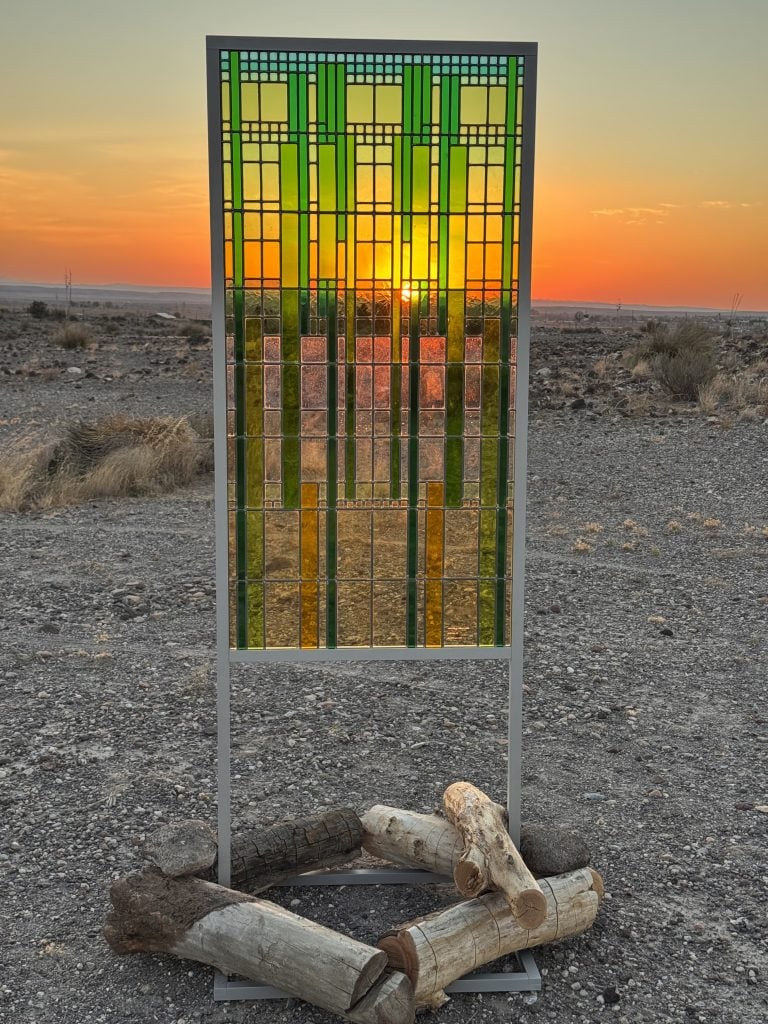
Jeff Davis’s work on display in Marfa. Courtesy of Trame.
Elsewhere in the cavernous hangar is digital artist Junior Ngoma, aka Fingacode’s, first forays into fiber works, colorful abstractions that double as textural shag topographies. Trame sponsored his trip to Morocco (its dynamic founder, Paris-based Ismail Tazi, hails from the North African country) for Ngoma to work directly with artisans in a carpet factory that mainly collaborates with luxury brands.
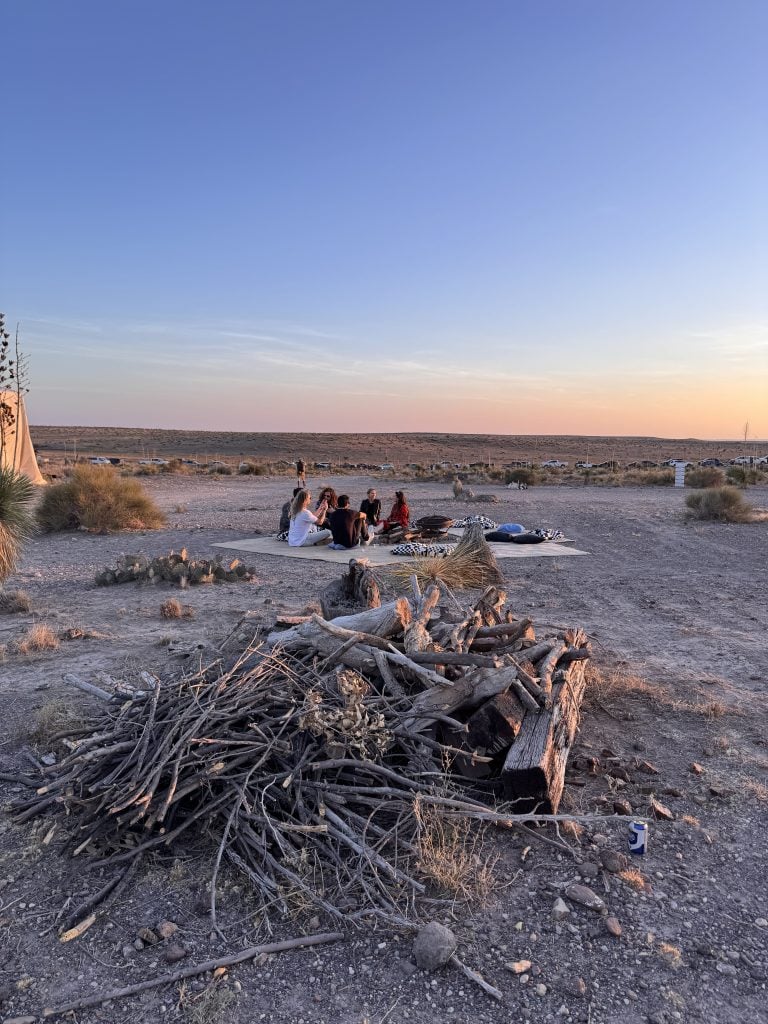
A group of “Desert Threads” attendees at Courtesy of Trame.
Ngoma explained his process and added, “So, that’s when I added in the ability for the machine to factor in different types and then it breaks it down a bit more. It gives it a bit more texture, more depth.” Digital artists Ix Shells and Linda Dounia also participated in this same Moroccan design pilgrimage as Ngoma, their evocative tapestries billowing gracefully in the desert breeze. Though these works are rooted in digital processes, their abstract, timeless design (and not to mention high-grade organic wool) belied the intricate digital underpinnings.
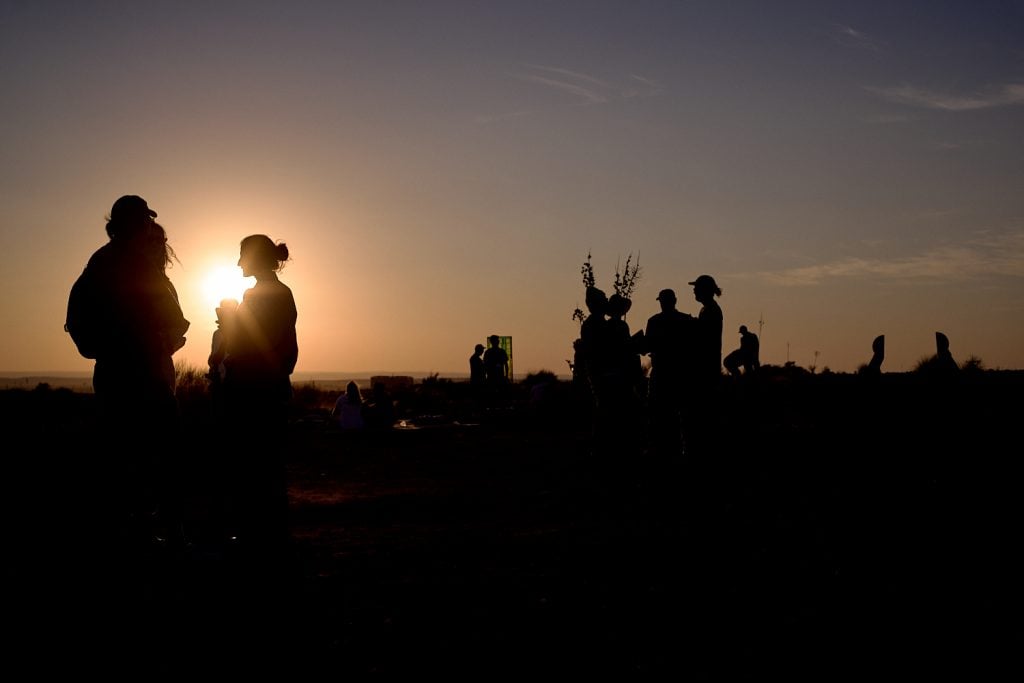
The moon rises at “Desert Threads.” Courtesy of Trame.
As the sky darkened, an eerily luminous full moon rose—a Beaver Moon, named by Native American tribes who observed this time of year as when beavers worked tirelessly to prepare for winter. It hung fiery and low in the desert expanse, casting an otherworldly glow over the scene. Outside the hangar, a DJ spun an eclectic set, seamlessly blending Fugazi with dub, as more attendees arrived. Firepits were interspersed around the area, and flames danced in the cool desert air. Attendees were lost in the night and in the moment, sitting atop souk-style cushions. “We’re working with a French fabric company that’s been around since 1908,” Derringer said of the overstuffed pillows. “Those are our prototype generative fabric that we’ll be launching.” Trame and its collaborators seemed to be onto something. “We don’t want to replace craft with tech,” she said. “We want to enhance craft with tech.”
Source Credit: Content and images from Artnet News. Read the original article - https://news.artnet.com/art-world/in-the-texas-desert-craft-meets-coding-2592897

